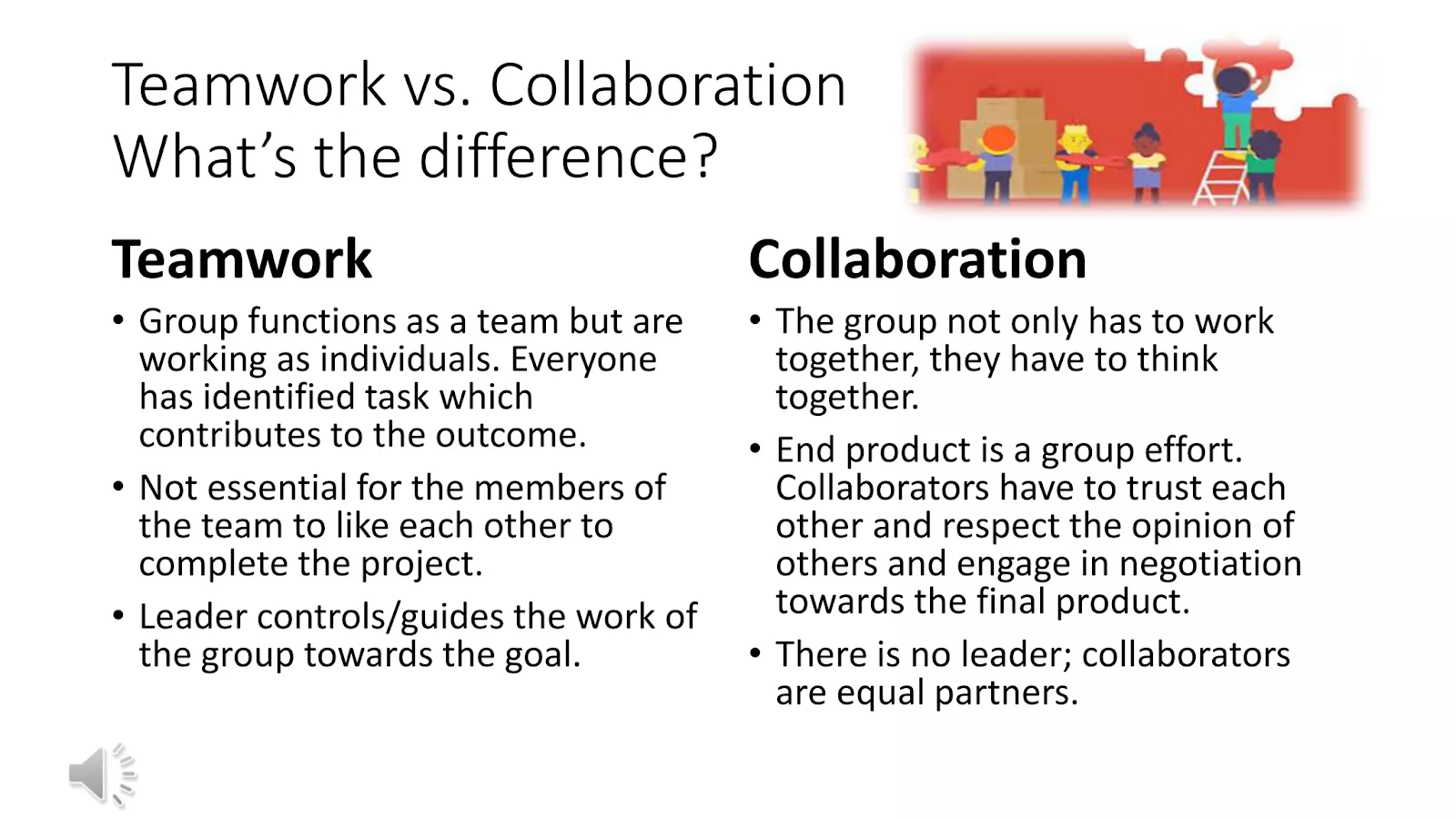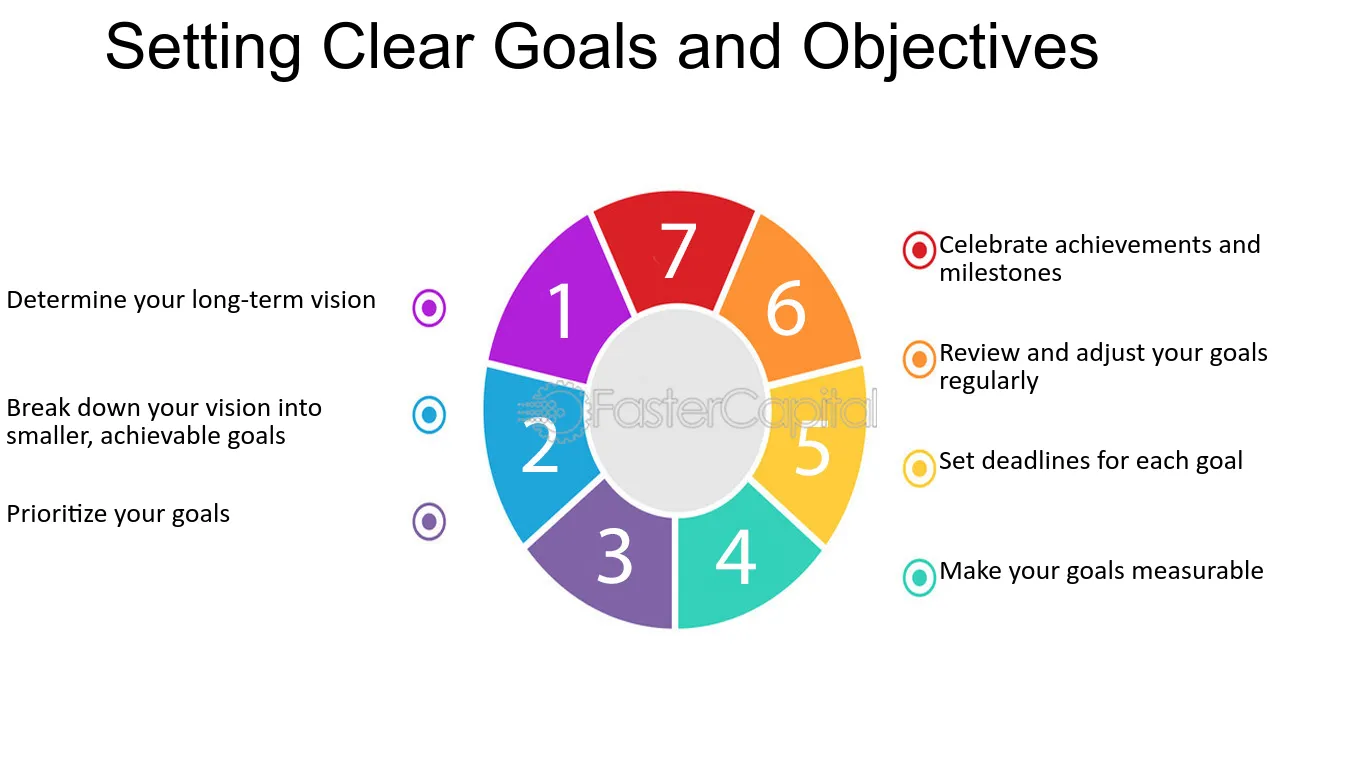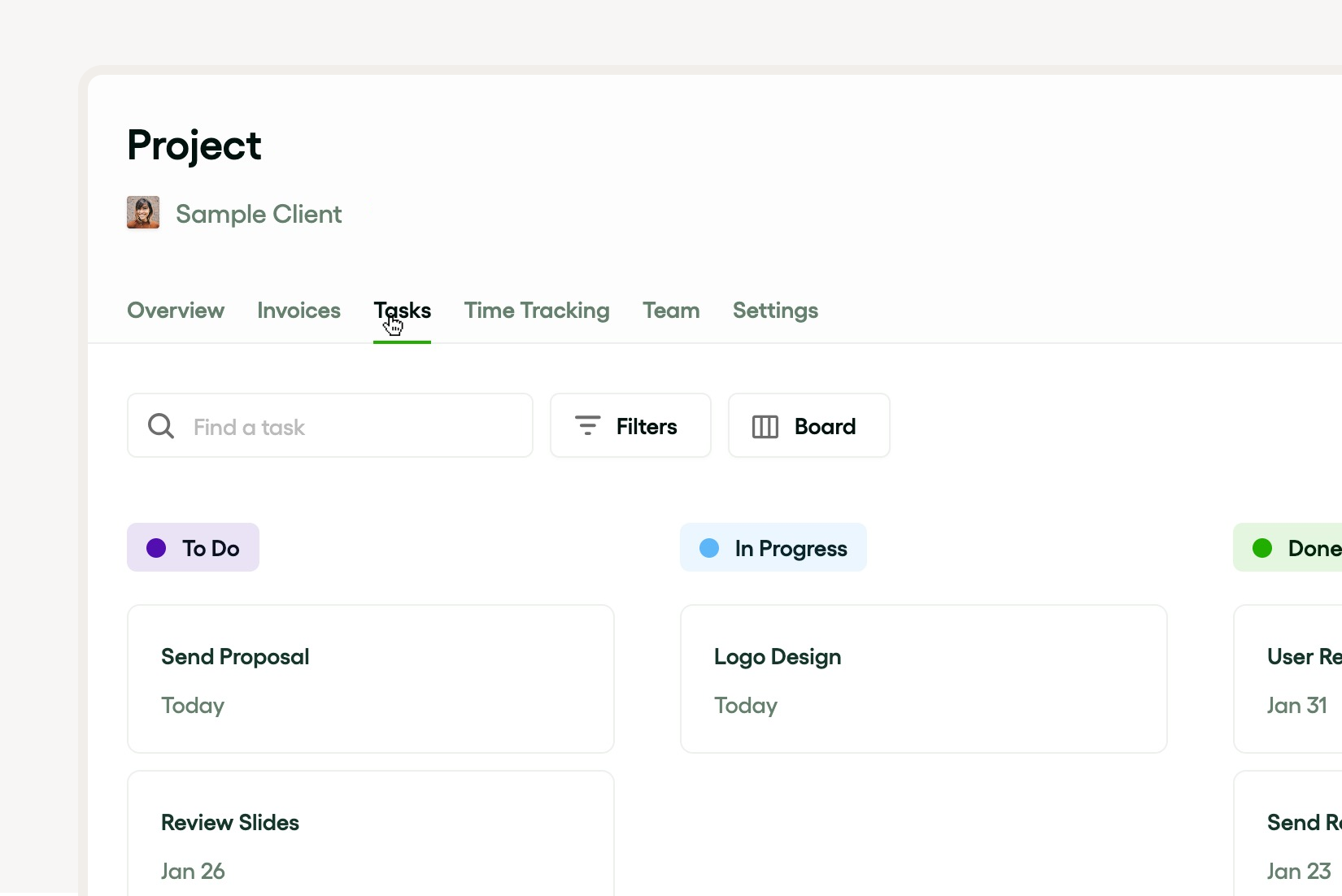Boosting effective team collaboration begins with fostering a culture of collaboration within the organization. This can be achieved by prioritizing teamwork and providing your staff with the appropriate collaboration tools. It's essential for project management and effective coordination among team members.
Promoting a collaborative work environment enhances team engagement and encourages healthy team relationships. Remote collaboration has become more critical in today's work set-up, and team collaboration software can be highly beneficial.
Remember, team performance is often reflective of the team leadership. So, utilize team-building exercises for team bonding and improving team communication. This ultimately boosts overall workplace collaboration.
Introduction to team collaboration

Team collaboration is crucial in any workplace setting because it significantly increases team performance and engagement. Effective team collaboration cultivates a culture of collaboration, fostering stronger team relationships and providing a collaborative work environment pivotal in achieving notable results.
It leverages project management strategies, teamwork, remote collaboration, and team communication. Additionally, modern collaboration tools such as team collaboration software and team-building exercises have become indispensable in enhancing workplace collaboration. Lastly, team leadership is instrumental in maintaining a productive and thriving team.
Understanding the importance of team collaboration
Team collaboration is super important for managing projects well. When teams work together closely, they talk better and build stronger bonds, which makes the whole team do better. With more people working from different places, being able to work together even when you’re not in the same room is getting more important.
Using the right software and tools for team collaboration can create a place where everyone works together well. Mixing this with regular activities to build the team can make people more involved and lead to strong, open leadership.
In short, focusing on teamwork and making a place where everyone works together can help companies do their best, make employees happier, and lead to success.
Benefits of effective team collaboration
When a team works together well, it can do amazing things. It makes managing projects better and makes the bonds between team members stronger. A workplace where everyone collaborates helps with sharing ideas, solving problems, and coming up with new things. It gets everyone involved and focused on the same goals, which is a big part of any successful business plan.
Tools for collaboration and software that helps teams work together are key, especially when people are working from different places. These tools are really useful during activities that bring the team together and help create a place where everyone works together. With good leadership, these tools can help make a team that’s welcoming, full of energy, and gets a lot done.
Challenges in team collaboration
Working as a team can be tough, especially in three areas: working together effectively, working from different places, and leading the team. Sometimes, when it’s not clear who should do what, when, and why, it can mess up how well the team works together. Working from different places can make it hard to get everyone involved, deal with time differences, and overcome communication problems. And for leaders, keeping a culture of collaboration alive, making sure everyone’s involved, and keeping the team doing well can be a real test.
Even with tools for working together and activities to build the team, it’s still really important to face these challenges head-on to make sure the team can work together well.
Best practice 1: Clear and open communication
The backbone of any effective team collaboration is clear and open communication. Creating a culture of collaboration where every team member feels valued and heard is essential. This can be achieved by utilizing the power of team collaboration software and other collaboration tools. This not only improves project management but also fosters a more collaborative work environment.
Moreover, team leadership plays a crucial role in team engagement. Team-building exercises can be employed to improve team relationships, Boosts Remote collaboration and ultimately enhance team performance. When done right, it strengthens The workplace Collaboration and promotes a high-performing team.
Role of communication tools like Bonsai, Slack and Microsoft teams
Clear and open communication is essential in project management, and tools like Bonsai are key in making this happen. When communication is effective, all team members can stay aligned with the project's goals and objectives, which helps to minimize misunderstandings and boost collaboration.
Bonsai's project management features offer one integrated, easy-to-use platform where team members can share updates, assign tasks, and monitor progress in real-time. This level of transparency promotes accountability and ensures that everyone knows their roles and deadlines.

Moreover, functionalities such as integrated chat, file sharing, and notifications enhance the flow of information, making it easier to tackle issues quickly and make well-informed decisions. By creating a collaborative atmosphere, Bonsai's communication tools contribute to building a strong team, ultimately steering the project toward successful completion.
Communication tools such as slack and Microsoft teams play a pivotal role in fostering a culture of collaboration and facilitating effective team collaboration. These team collaboration software tools not only improve team engagement but also enhance team communication, especially in a remote collaboration scenario.
These collaboration tools are responsible for creating a collaborative work environment as they streamline project management and facilitate workplace collaboration. These tools support team leadership in coordinating tasks, conducting team-building exercises, and improving team performance by strengthening team relationships.
Best practice 2: Setting clear goals and objectives

Setting clear goals and objectives is crucial for effective team collaboration and fostering a culture of collaboration. It helps in defining the pathway to achieve project management tasks swiftly and encourages a collaborative work environment. Good team leadership involves setting target timelines and deadlines, describing individual roles, and outlining expected outcomes, all of which bolster team engagement and performance.
The use of team collaboration software and other collaboration tools can further promote clarity and ensure that everyone is on the same page. Regular team-building exercises can also aid in strengthening team relationships and improving team communication.
Using project management tools like Bonsai, Trello and Asana
Clear goals and objectives are essential for any project's success, and project management tools like Bonsai can greatly improve this process. Bonsai enables project managers to define and document specific, measurable, achievable, relevant, and time-bound (SMART) goals, ensuring that all team members understand the project's direction and expectations.

By providing a centralized platform, Bonsai facilitates the alignment of individual tasks with overall project objectives, making it easier to track progress and make adjustments as needed. The tool's features, such as task assignment, progress tracking, and real-time updates, help maintain transparency and accountability, ensuring that everyone is working towards the same goals.
Additionally, Bonsai's visual aids, like Gantt charts and Kanban boards, offer a clear overview of the project timeline and milestones, helping teams stay focused and motivated. Overall, using Bonsai for setting and managing goals and objectives leads to more organized, efficient, and successful project outcomes.

Trello and asana are powerful project management tools designed to enhance team collaboration and foster a culture of collaboration in a collaborative work environment. These tools offer features that promote team engagement, enhance team communication, and improve team performance.
Whether for remote collaboration or in-office interaction, they offer features like:
- Task assignment
- Project tracking
- Team-building exercises functionality
These make them Key Team collaboration software for team leadership wanting to streamline project handling and improve team relationships.
Best practice 3: Encouraging active participation
Encouraging active participation is crucial for effective team collaboration. Using the right collaboration tools and holding team-building exercises can greatly boost team engagement and cooperation. These practices don’t just make the workplace better for working together; they also seriously improve how well the team works and gets along.
Project management should go hand in hand with software for team collaboration, especially when teams are spread out. Building a culture of collaboration means making communication better and relationships healthier. All these things together push for active participation, which is super important for good leadership.
Creating an inclusive environment
Making a place where everyone works together well is key for team collaboration. This means setting up a work environment that gets everyone involved and supports teamwork. Some ways to do this include team-building activities, making communication better, and using tools like software for team collaboration.
Inclusive project management is also really important, more so now that more people are working from different places. This includes making sure everyone has a chance to pitch in, having leaders who are supportive and kind, keeping an eye on how the team is doing, and making sure relationships within the team are healthy. The aim is to make a place where everyone feels like they matter and are part of the team.
Best practice 4: Promoting trust and accountability
Promoting trust and accountability is a crucial step towards building a solid culture of collaboration. This involves developing clear project management strategies, employing effective team engagement methods, and the judicious use of collaboration tools.
Accentuating transparency, setting achievable goals, and recognizing individual contributions can all play a significant role in fostering trust among team members.
Implementing team collaboration software can also enhance remote collaboration and improve team communication.
Furthermore, involving team members in team-building exercises helps to cultivate stronger team relationships, drive teamwork and optimize team performance. Team leadership consequently becomes more effective and meaningful, paving the way to a productive collaborative work environment.
Building trust within the team
Building trust is the bedrock of effective team collaboration. A culture of collaboration stems from a strong team leadership that sets the atmosphere for an open, honest, and collaborative work environment. Trust strengthens team relationships, boosting team performance and engagement.
Strategies to build trust may include team-building exercises that encourage open and effective team communication. Using project management tools and team collaboration software can further promote transparency and teamwork, especially in a remote collaboration setting.
Ensuring accountability with tools like Jira
Tools such as jira can ensure accountability in a collaborative work environment, boosting team performance with effective team collaboration. Jira is an advanced project management tool that keeps all team engagement in one place, enhancing team communication by making it easy to track, prioritize, and discuss tasks.
Jira fosters a culture of collaboration and remote collaboration by providing clear visuals of the workload, delegating responsibilities transparently, and allowing easy tracking of project progress. Its user-friendly interface enhances teamwork, ultimately promoting a harmonious team relationship and effective team leadership.
Best practice 5: Regular feedback and recognition
Effective team collaboration is bolstered by regular feedback and recognition, promoting a culture of collaboration in a team. This practice enhances teamwork and fosters a collaborative work environment, as members feel seen, valued, and motivated to contribute more. It's essential to integrate consistent, constructive feedback into team communication.
Using collaboration tools can simplify the process of giving feedback and recognizing team efforts. Apart from facilitating project management, features in team collaboration software can be used for acknowledging positive team performance, hence stimulating team engagement.
Importance of constructive feedback
Constructive feedback is crucial in fostering An effective Team collaboration and building a culture of collaboration in the workplace. It promotes a collaborative work environment by enhancing team engagement, facilitating efficient project management, and improving team performance. Through honest and helpful communication, it strengthens team relationships as well. Additionally, constructive feedback can enhance the functionality of collaboration tools or team collaboration software by promoting their efficient use. It's an essential component of team leadership and sets the stage for successful teamwork.
Recognizing team efforts
Teamwork is the catalyst for effective team collaboration. Recognizing team efforts within a collaborative work environment fosters a culture of collaboration that transcends the normal boundaries of team relationships. The utilization of collaboration tools and team collaboration software significantly enhances team engagement, especially in remote collaboration settings.
Team leadership plays a pivotal role in facilitating project management, fostering team communication, and driving team performance to achieve set objectives. Team-building exercises also contribute positively to building a sustainable workplace collaboration environment.
Best practice 6: Fostering a culture of learning and development

Creating a culture of learning and development is a game-changer for team collaboration. It’s all about pushing for growth and betterment, which builds a work environment where everyone is keen to level up their skills. This kind of vibe boosts how well the team works together and makes their bond stronger.
Tools like team collaboration software and project management platforms are big supporters of this culture. They make it easier for teams to learn, grow, and work together, even when they’re not in the same place. Team-building activities and keeping the lines of communication open are also super important for keeping everyone engaged and learning together.
Continuous learning with platforms like Coursera and Udemy
Sites like Coursera and Udemy are all about helping teams work together better by offering tons of courses on project management, leading a team, and talking to each other effectively. They’re great for learning no matter where you are, which is perfect for teams spread out all over.
Best practice 7: Leveraging technology for collaboration
When it comes to fostering a productive work environment, there are several team collaboration best practices to consider. One such method involves the use of advanced client collaboration software, offering streamlined communication channels and project management tools. This tool can enhance team dynamics and improve overall output.
Effective team collaboration can be Greatly Enhanced by embracing the vast array of available technology. By integrating collaboration tools such as project management software and team communication platforms, teams increase their productivity and efficiency in a collaborative work environment. This not only bolsters team performance but also significantly improves remote collaboration capabilities.
Additionally, these tools offer avenues for defining clear team engagement strategies, promoting a culture of collaboration and fostering positive team relationships. They also lend themselves to innovative team-building exercises, Crucial For cohesive teamwork and strong team leadership.
Role of collaboration tools like Google Workspace
Collaboration tools, such as Google workspace, play a crucial role in creating an effective team collaboration. With these tools, team engagement is increased, and a culture of collaboration is fostered in the workplace. Their use makes the management of projects more efficient and promotes a seamless flow of team communication.
Google workspace serves as an integral component in a collaborative work environment where remote collaboration and teamwork are paramount. These tools facilitate team-building exercises, enhance team performance, and foster better team relationships. Hence, they are an essential part of team leadership and project management.
Best practice 8: Balancing autonomy and supervision

Balancing autonomy and supervision is vital in team leadership. It’s about creating a space where teams can collaborate effectively, have the freedom to be creative, and still have enough guidance to meet the company’s goals.
Using tools like team collaboration software helps make teamwork smoother, improves how we talk to each other, and makes project management better. Team-building activities are also key for getting everyone involved and making team bonds and performance stronger.
Empowering team members
Empowering team members is a cornerstone of good team collaboration. It’s about making a work environment where everyone feels like they can speak up and get involved. Strong leadership is crucial here—it lets people take charge of their work and boosts how well the team does.
Tools like team collaboration software can really up your game in project management and help with working together from afar. Plus, things like team-building activities can make team ties stronger and improve how we communicate. With the right approach, empowerment can make working together a whole lot better.
Maintaining effective supervision
Effective supervision is a must for team collaboration to work. A supervisor who encourages teamwork, uses team-building activities, and collaboration tools can create a great setup for working together, even when the team’s not in the same place. These moves are super important for keeping team ties and performance up.
Conclusion: Implementing best practices for enhanced team collaboration
In conclusion, a collaborative work environment Can be fostered by implementing effective team collaboration techniques, utilizing collaboration tools, and encouraging a culture of collaboration. This not only enhances team engagement and performance but also improves project management.
Key strategies include promoting open and clear team communication, conducting team-building exercises, and leveraging team collaboration software. These methods, particularly in a remote collaboration setting, strengthen team relationships, aid in achieving team leadership roles, and facilitate seamless workplace collaboration.







